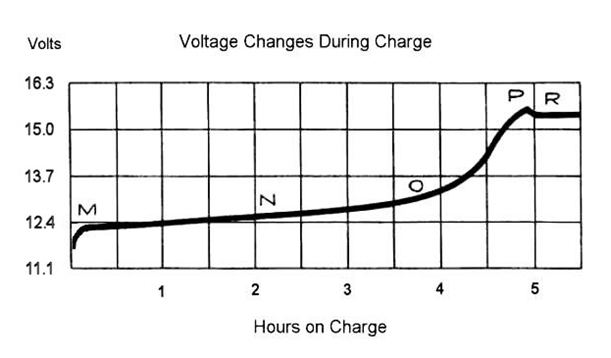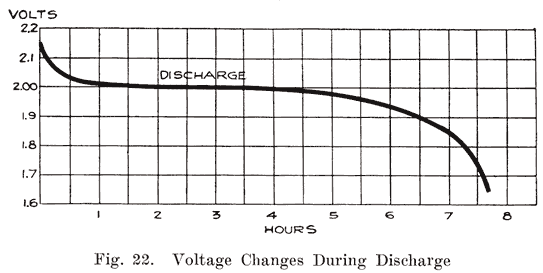Something like that, if a highly cycled SSG charged battery is let stand for 1-4 hours after charging and have 13V + then don't discharge them so deep, and they will bounce back up much easier the next charge cycle. And still have a good output.
So think about it, a normal charged battery will stand at 12.7V +/- and discharge down to 12 = x Ah
I have seen highly cycled L16's stand at 13.10+, (in 24V Banks) and not discharge below 13V for 30 min or so, and take over 3 hours to go below 12.90V and the another 8 Hours or so to get down to the 12.4V I was stopping at, and still have the same Ah or more than a normal charged battery.
It makes the battery operate in a different Voltage range, and different state of Sulfanation, closer to the non supfhanation range of the charged battery, than the highly Sulfanated state of a battery that has been discharged down to 12V -.
Every discharge cycle of a normal charge battery creates a layer of sulfate on the plates, a charge cycle should get rid of ALL of that layer, but normal chargers cant do that and get them up over 15V+, where the spikes in the SSG works different and can get them up to 16V + if allowed to.....
Some times it takes a Lot of cycles to brake through all the layers of Sulfanation that have built up, and is why new battery's are better to start with, as less sulfate layers to dissolve back into the electrolyte to get a fully charged battery......
See PL's Battery Presentation from 2011 for more info on the Charge / Discharge state chemistry of the battery and the 2 different plate compounds / electrolyte, and how it changes when charged and discharged.....
So think about it, a normal charged battery will stand at 12.7V +/- and discharge down to 12 = x Ah
I have seen highly cycled L16's stand at 13.10+, (in 24V Banks) and not discharge below 13V for 30 min or so, and take over 3 hours to go below 12.90V and the another 8 Hours or so to get down to the 12.4V I was stopping at, and still have the same Ah or more than a normal charged battery.
It makes the battery operate in a different Voltage range, and different state of Sulfanation, closer to the non supfhanation range of the charged battery, than the highly Sulfanated state of a battery that has been discharged down to 12V -.
Every discharge cycle of a normal charge battery creates a layer of sulfate on the plates, a charge cycle should get rid of ALL of that layer, but normal chargers cant do that and get them up over 15V+, where the spikes in the SSG works different and can get them up to 16V + if allowed to.....
Some times it takes a Lot of cycles to brake through all the layers of Sulfanation that have built up, and is why new battery's are better to start with, as less sulfate layers to dissolve back into the electrolyte to get a fully charged battery......
See PL's Battery Presentation from 2011 for more info on the Charge / Discharge state chemistry of the battery and the 2 different plate compounds / electrolyte, and how it changes when charged and discharged.....







Comment